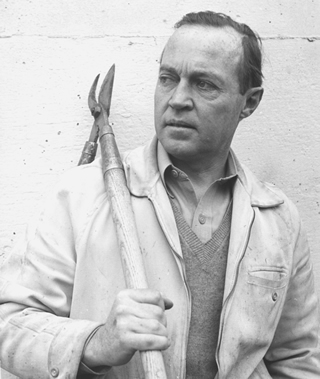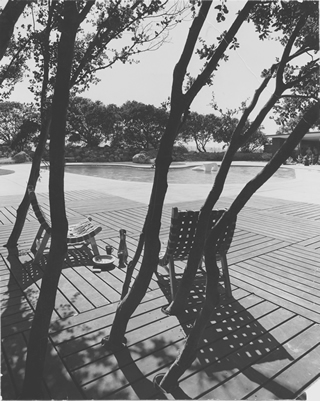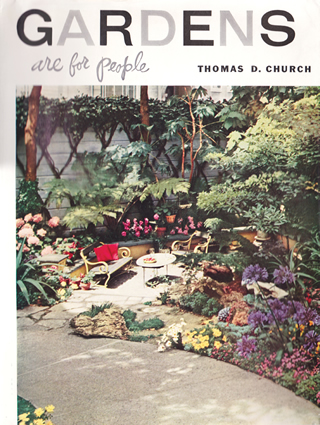Pioneers of Outdoor Living - Page 2
 |
|
|
 |
|
|
 |
|
|
1. Thomas Church
Garrett Eckbo called Tommy Church (1902-1978) “the last great traditional designer and the first great modern designer.”
What made Church modern was his focus on how a garden functioned for people who wished to live part of their lives out of doors. Consider the title of his famous book, Gardens Are for People.
“Formal or informal, curved, straight, symmetrical or free, the important thing is that you end up with a functional plan and an artistic composition,” Church wrote. Plants would be part of the garden—but not the raison d’etre.
Church’s gardens often featured large areas of ‘hardscape’ (packed sand or wood or masonry paving) to create usable spots for living outside. He pioneered the use of the redwood deck.
As architect and longtime collaborator Theodore Bernardi recalled, “Tommy invented the idea that landscape gardening was not necessarily plants, at least out West.” Church worked often with architect William Wurster and his firm Wurster, Bernardi and Emmons.
Also modern were Church’s wonderfully freeform designs, with amoeba shapes and curves playing against straight lines and zigzags. “It is as if the landscape architects were composing an abstract painting for people to live within,” UC Berkeley professor Stephen Pepper wrote about the modern school.
Church, “so charming and unassuming,” in the words of one colleague, often sketched his designs on a sheet of paper and improvised on the site. He designed hundreds of residential gardens, many for Eichler homeowners, gardens for large housing developments such as Parkmerced in San Francisco, for low-income housing like Valencia Gardens in San Francisco, as well as large projects, including college campuses.
“His designs were never forced,” colleague Ruth Jaffe recalled. “They flowed out of him onto the ground, and when they got onto the ground, they flowed all over the ground. It was just a joy, to make things joyous.”
For a time, architect Donn Emmons remembered, Church was the only landscape architect in the state doing modern work. “Everybody else was doing Renaissance gardens,” he said.
Eckbo, Royston, Halprin, Baylis, and Osmundson all began their professional careers working for Tommy, although Osmundson and Eckbo both did so briefly. “I don’t think of anybody being his competitor,” Bernardi said, “until he brought up his own tribe of competitors.”




